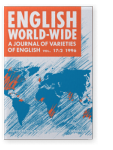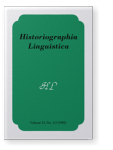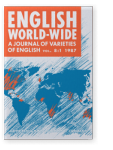Inger M. Mees
List of John Benjamins publications for which Inger M. Mees plays a role.
2015 Sound effects in translation Interdisciplinarity in Translation and Interpreting Process Research, Ehrensberger-Dow, Maureen, Susanne Göpferich and Sharon O'Brien (eds.), pp. 141–155 | Article
On the basis of a pilot study using speech recognition (SR) software, this chapter attempts to illustrate the benefits of adopting an interdisciplinary approach in translator training. It shows how the collaboration between phoneticians, translators and interpreters can (1) advance research, (2)… read more
2013 Sound effects in translation Interdisciplinarity in Translation and Interpreting Process Research, Ehrensberger-Dow, Maureen, Susanne Göpferich and Sharon O'Brien (eds.), pp. 140–154 | Article
On the basis of a pilot study using speech recognition (SR) software, this paper attempts to illustrate the benefits of adopting an interdisciplinary approach in translator training. It shows how the collaboration between phoneticians, translators and interpreters can (1) advance research, (2)… read more
2003 Patterns of dictionary use in non-domain-specific translation Triangulating Translation: Perspectives in process oriented research, Alves, Fabio (ed.), pp. 123–136 | Article
1996 Spreading everwhere? How Recent a Phenomenon is Glottalisation in Received Pronunciation? English World-Wide 17:2, pp. 175–187 | Article
There is no doubt that glottalisation of syllable-final stops in Received Pronunciation is on the increase, but this has sometimes been taken to imply that the feature has mushroomed as a late 20th-century phenomenon. This paper sets out to show that glottalisation is actually of some antiquity.… read more
1995 Daniel Jones, Paul Passy, and the development of the cardinal vowel system Historiographia Linguistica 22:1/2, pp. 197–216 | Article
Developed in the first quarter of the present century, Daniel Jones’s (1881–1967) Cardinal Vowel theory has proved for many years to be the most popular and enduring model of vowel description. Only relatively recently have doubts about its shaky theoretical foundations – first expressed as early… read more
1987 Glottal Stop as a Prestigious Feature in Cardiff English English World-Wide 8:1, pp. 25–39 | Article





